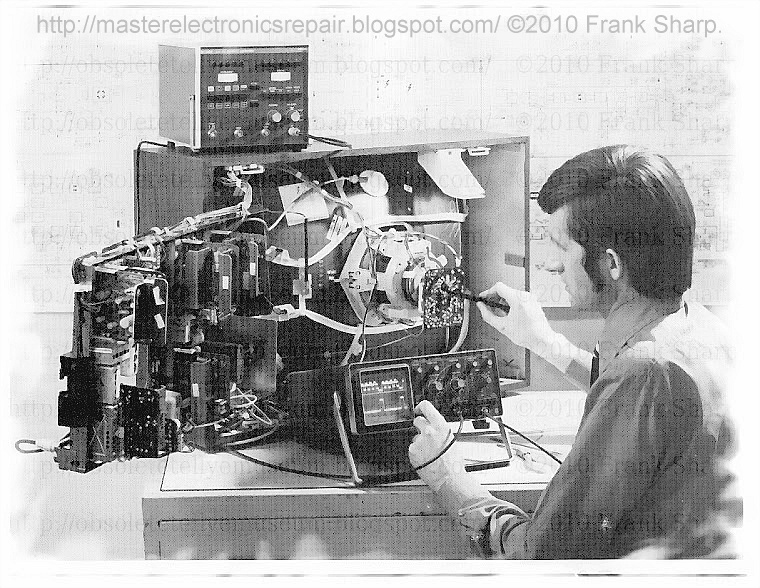TRANSISTOR
Code
Type Equivalent Conventional
of
most
Part
Common
15 MMBT3960 2N3960
1A FMMT3904 2N3904
1B BC846B BC546B
/ 2N2222
1C MMBTA20 MPSA20
1E BC847A BC547A
1F BC847B BC547B
1G BC847C
/ FMMTA06 BC547C
1J BC848A
/ FMMT2369 BC548A / 2N2369
1K BC848B BC548B
1L BC848C BC548C
1P FMMT2222A 2N2222A
1T MMBT3960A 2N3960A
1X MMBT930 -
1Y MMBT3903 2N3903
2A FMMT3906 2N3906
2B MMBT2907 2N2907
2C BC849C BC549C
/ BC109C / MMBTA70
2E FMMTA93 -
2F FMMT2907A 2N2907A
2J MMBT3640 2N3640
2K MMBT8598 -
2M MMBT404 -
2N MMBT404A -
2T MMBT4403 2N4403
2W MMBT8599 -
2X MMBT4401 2N4401
3A BC856A
/ MMBTH24 BC556A
3B BC856B
/ FMMT918 BC556B
3D MMBTH81 -
3E BC857A
/ MMBTH10 BC557A
3F BC857B BC557B
3G BC857C BC557C
3J BC858A BC558A
3K BC858B BC558B
3L BC858C BC558C
4A BC859A BC559A
4B BC859B BC559B
4C BC859C BC559C
4E FMMTA92 -
4J FMMT38A -
449 FMMT449 -
489 FMMT489 -
491 FMMT491 -
493 FMMT493 -
5A BC807-16 -
5B BC807-25 BC327-25
/ 2N4123
5C BC807-40 -
5E BC808-16 -
5F BC808-25 BC328-25
5G BC808-40 -
549 FMMT549 -
589 FMMT589 -
591 FMMT591 -
593 FMMT593 -
6A BC817-16 -
6B BC817-25 BC337-25
6C BC817-40 -
6E BC818-16 -
6F BC818-25 -
6G BC818-40 -
6H BC818-40 BC338-40
AA BCX51 BC636
/ BCW60A
AB BCW60B -
AC BCW60C BC548B
AD BCW60D -
AE BCX52 -
AG BCX70G -
AH BCX70H -
AJ BCX70J -
AK BCX70K -
AL MMBTA55 -
AM BSS64 2N3638
AS1 BST50 BSR50
B2 BSV52 PH2369
/ BSX20
BA BCX54
/ BCW61A BC635
BB BCW61B -
BC BCW61C -
BD BCW61D -
BE BCX55 -
BG BCX71G -
BH BCX56 BC639
BJ BCX71J -
BK BCX71K -
BN MMBT3638A 2N3638A
BR2 BSR31 2N4031
C1 BCW29 -
C2 BCW30 BC178B
/ BC558B
C5 MMBA811C5 -
C6 MMBA811C6 -
C7 MMBA811C7 -
C8 MMBA811C8 -
CE BSS79B -
CEC BC869 BC369
CF BSS79C -
CH BSS82B
/ BSS80B -
CJ BSS80C -
CM BSS82C -
D1 BCW31 BC108A
/ BC548A
D2 BCW32 BC108A
/ BC548A
D3 BCW33 BC108C
/ BC548C
D6 MMBC1622D6 -
D7 MMBC1622D7 -
D8 BCF33 BC549C
/ BCY58 / MMBC1622D8
DA BCW67A -
DB BCW67B -
DE BFN18 -
DF BCW68F -
DG BCW68G -
DH BFN19 -
E1 BFS17 BFY90
/ BFW92
EA BCW65A -
EB BCW65B -
EC BCW65C
/ BCW67C -
F1 MMBC1009F1 -
F3 MMBC1009F3 -
FA BFQ17 BFW16A
FE BCV46 -
FG BCV47 -
GF BFR92P -
H1 BCW69 -
H2 BCW70 BC557B
K1 BCW71 BC547A
K2 BCW72 BC547B
K4 BCW71R -
K7 BCV71 -
L1 BSS65 -
L2 BSS70 -
L3 MMBC1323L3 -
L4 MMBC1623L4 -
L5 MMBC1623L5 -
L6 MMBC1623L6 -
L7 MMBC1623L7 -
M3 MMBA812M3 -
M4 MMBA812M4 -
M5 MMBA812M5 -
M6 BSR58
/ MMBA812M6 2N4858
M7 MMBA812M7 -
O2 BST82 -
P1 BFR92 BFR90
P2 BFR92A BFR90
P5 FMMT2369A 2N2369A
Q3 MMBC1321Q3 -
Q4 MMBC1321Q4 -
Q5 MMBC1321Q5 -
R1 BFR93 BFR91
R2 BFR93A BFR91
S1A SMBT3904 -
S1D SMBTA42 -
S2 MMBA813S2 -
S2A SMBT3906 -
S2D SMBTA92 -
S2F SMBT2907A -
S3 MMBA813S3 -
S4 MMBA813S4 -
T1 BCX17 BC327
T2 BCX18 -
T7 BSR15 2N2907
T8 BSR16 2N2907A
U1 BCX19 BC337
U2 BCX20 -
U7 BSR13 2N2222
U8 BSR14 2N2222A
U92 BSR17A 2N3904
Z2V FMMTA64 -
ZD MMBT4125 2N4125
JFET Transistors
Code
Type Equivalent Conventional
of
most
Part
Common
6A MMBF4416
6B MMBF5484
6C MMBFU310
6D MMBF5457
6E MMBF5460
6F MMBF4860
6G MMBF4393
6H MMBF5486
6J MMBF4391
6K MMBF4932
6L MMBF5459
6T MMBFJ310
6W MMBFJ175
6Y MMBFJ177
B08 SST6908
B09 SST6909
B10 SST6910
C11 SST111
C12 SST112
C13 SST113
C41 SST4091
C42 SST4092
C43 SST4093
C59 SST4859
C60 SST4860
C61 SST4861
C91 SST4391
C92 SST4392
C93 SST4393
H16 SST4416
I08 SST108
I09 SST109
I10 SST110
M4 BSR56
M5 BSR57
M6 BSR58
P01 SST201
P02 SST202
P03 SST203
P04 SST204
S14 SST5114
S15 SST5115
S16 SST5116
S70 SST270
S71 SST271
S74 SST174
S75 SST175
S76 SST176
S77 SST177
TV MMBF112
Z08 SST308
Z09 SST309
Z10 SST310
TRANSISTOR MOS-FET
Code
Type Equivalent Conventional
of
most
Part
Common
6Z MMBF170
701 2N7001
702 SN7002
SA BSS123
SS BSS138
V01 VN50300T
V02 VN0605T
V04 VN45350T
V0AJ TP610T
V50 VP0610T
Diodes
Code
Type Equivalent Conventional
of
most
Part
Common
005 SSTPAD5 Dual
Diode
010 SSTPAD10 Dual
Diode
020 SSTPAD20 Dual
Diode
050 SSTPAD50 Dual
Diode
100 SSTPAD100 Dual
Diode
200 SSTPAD200 Dual
Diode
4D MMBV3401 PIN
Diode
4F MMBD353 Dual
Schottky diode
4M MMBD101 Schottky
diode
4R MMBV3700 PIN
diode
4S MMBD201 Schottky
diode
4T MMBD301 Schottky
diode
500 SSTPAD500 Dual
Diode
5AX MMBD6050X -
5B MMBD6100 -
5C MMBD7000 -
5DX MMBD914X -
5D FMMD914 1N914
5F MMBD501 Schottky
diode
5G MMBD352 Dual
Schottky diode
5H MMBD701 Schottky
diode
A1 BAW56 -
A1X MBAW56 Dual
diode
A2X MMBD2836X Dual
diode
A3 BAT17 BA480
A3X MMBD2835X Dual
diode
A4 BAV70 BAW62
/ 1N4148
A4X MBAV70 Dual
diode
A6 BAS16 BAW62
/ 1N4148
A61 BAS28 BAW62
/ 1N4148
A6X MBAS16 (MMBD2836X
Dual version)
A7 BAV99 BAW62
/ 1N4148
A7X MBAV99 Dual
diode
ITT
BA BAT42W -
JAX BAT42W Dual
diode
JD BAW56 -
JE BAV99 -
JJ BAV70 -
JS BAS21 BAV21
JP BAS19 BAV19
L4P BAT54/T1 BAT85
L42 BAT54A/T1 BAT85
L44 BAT54S/T1 BAT85
PSS BAR64-04 Dual
diode
PRS BAR64-05 Dual
diode
TFX MBAL99 -
Type SOT-323
Code
Type Equivalent Conventional
of
most
Part
Common
A1 BAW56W -
A4 BAV70W -
A6 BAS16W -
A7 BAV99W -


